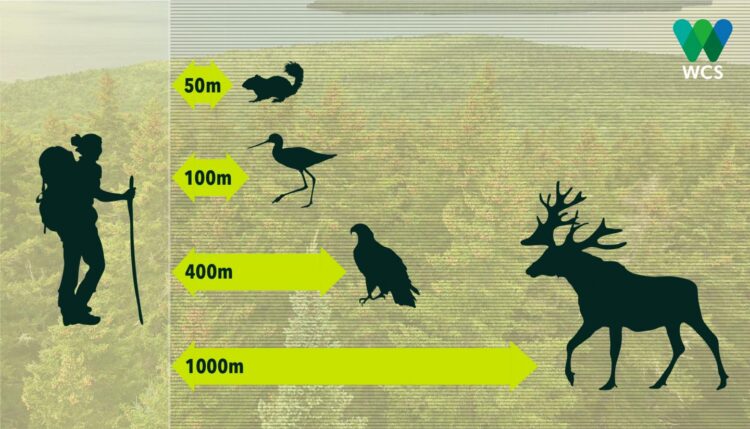Spending time outdoors is good for a person’s body and soul, but how good is it for the wildlife around us?
Outdoor recreation has become a popular activity, especially in the midst of a pandemic, where access to indoor activities might be limited. Long known to have negative behavioural and physiological effects on wildlife, outdoor recreation is one of the biggest threats to protected areas. Human disturbance to animal habitats can lower their survival and reproduction rates, and ultimately shrink populations or eradicate them from areas where they would otherwise thrive. Still, park planners and natural resource managers often can’t find clear recommendations on how to limit these impacts.
A new scholarly article in the open-access, peer-reviewed journal Nature Conservation from researchers at the Wildlife Conservation Society looked at nearly 40 years of research on recreation impacts on wildlife to try to find the point where recreation starts to impact the wildlife around us. Knowing when and to what extent a species is being disturbed can ultimately allow for more informed and effective management decisions and increase the chances of its successful conservation.
The researchers found that the impact or uncomfortable distance to humans, vehicles or trails for shorebirds and songbirds was as short as 100 meters or even less, whereas for hawks and eagles it was greater than 400 meters. For mammals, it varied even more widely, with an impact threshold of 50 meters for medium-sized rodents. Large ungulates – like elk – would rather have to stay 500 to 1,000 meters away from people.
While human disturbance thresholds can vary widely, large buffer zones around human activities and controlled visitation limits should always be considered during planning and maintenance of parks and protected areas. Based on their findings, the authors recommend that human activities should be considered to be impacting wildlife at least 250 metres away. Further, they call for future research to explicitly identify points where recreation begins or ends to impact wildlife.
###
Dertien JS, Larson CL, Reed SE (2021) Recreation effects on wildlife: a review of potential quantitative thresholds. Nature Conservation 44: 51-68. https:/
Media Contact
Jeremy Dertien
[email protected]
Related Journal Article
http://dx.





